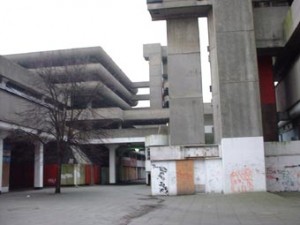
November 30, 2013, by Stephen Mumford
Tårnbygningen
On the campus of the Norwegian University of Life Sciences stands a collection of striking old buildings. One of them – Tårnbygningen – houses the business school and the philosophers. The name means Tower Building. I am very lucky to be a visiting professor there and find it a joy every day I walk towards the building. It’s the sort of setting in which one wants to work, spend time and talk with colleagues. A short walk to the west, off the campus, the next building one comes to is not so pretty. It’s more modern with grey concrete and glass and although it’s not the ugliest building I’ve seen I feel sorry for those who go to work there. They must look across the field enviously at the imposing Tower Building and wish it was theirs.
Everyone is affected by their built environment: both the surroundings afforded by building exteriors and also the design and arrangement of interiors. The layout of rooms and furnishings impinge very practically on how we function and interact with others sharing the space, but the internal and external aesthetics can have just as strong an impact on our psyche. In short, our surroundings can make us feel happy and more productive if they give us a positive aesthetic response.
 Of course, the opposite outcome is a danger all-too apparent in the bad buildings gifted us by the architects. One sometimes wonders what they were thinking. If one considers a monstrosity such as the notorious old Tricorn Centre in Portsmouth (pictured left), one thinks the brutalist style was bound to induce neuroses and feelings of alienation. And I have recently visited some buildings that were designed on such a vast inhuman scale that the intended grandeur serves only to make me feel very small.
Of course, the opposite outcome is a danger all-too apparent in the bad buildings gifted us by the architects. One sometimes wonders what they were thinking. If one considers a monstrosity such as the notorious old Tricorn Centre in Portsmouth (pictured left), one thinks the brutalist style was bound to induce neuroses and feelings of alienation. And I have recently visited some buildings that were designed on such a vast inhuman scale that the intended grandeur serves only to make me feel very small.
One may think it only aesthetics, but architecture is an aesthetics that matters very immediately. We are not solely practical beings, mechanically seeking the satisfaction of our material needs. We are affected by impractical considerations just as much. Tårnbygningen affects me in a positive way as does the Trent Building at Nottingham. I wonder just how many employment and study choices are determined by such purely aesthetic considerations. I often suspect that some of those responsible for providing buildings don’t quite understand just how important their own work is for the rest of us. They can move on to the next project but the building’s users have to live with the result every day. The good buildings tend to stay with us. Eyesores like the Tricorn tend to be demolished. Again, such a decision is to a significant degree an aesthetic one and the artistic eye often has the final say.

Excellent point! To work in a beautiful building and surroundings makes me feel that my job is important, plus it adds to the general quality of life.